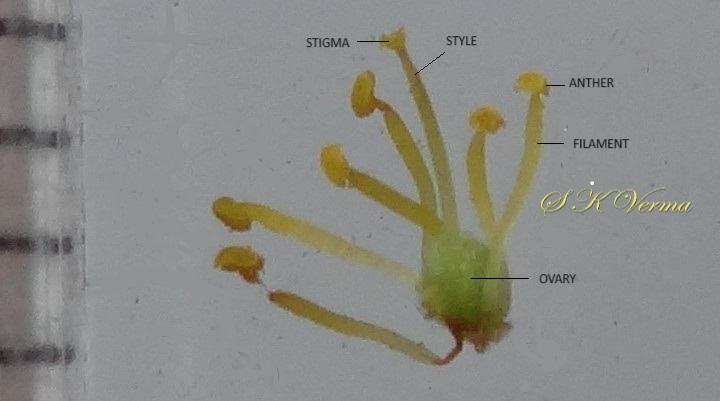TRIUMFETTA
Triumfetta
L., Sp. Pl. 1: 444. 1753; Gen. Pl. 5: 203. 1754; DC., in Prodr. 1: 505. 1824; Benth. & Hook.f., Gen. Pl. 1: 234. 1862; Boiss., Fl. Or. 1: 844. 1867; Masters in Hook. f., Fl. Brit. Ind. 1: 394. 1875; Hutch., Gen. Fl. Pl. 1.2: 489. 1967; Fl. China @ eFloras.org 12: 258; Nesom, Fl. North Amer. @ eFloras.org vol. 6; Fl. Pak. @ eFloras.org p. 15.
Shrubs, undershrubs or herbs, stellate hairy. Leaves simple, alternate, petiolate, entire or palmately 3-5-lobed, serrate, basal serrations mostly glandular. Stipules persistent, rarely fugaceous (wither or fall off early). Inflorescence axillary or leaf-opposed, dense fascicles of 3-flowered dichasial cymes. Flowers yellow, small, pedicellate, actinomorphic, bisexual or female, 5-merous, hypogynous. Sepals 5, free, often dorsally hooded, awned at apex, valvate. Petals 5, free, mostly ciliate and pitted-glandular at base, rarely petals absent. Stamens 5-10-many, free, inserted on 5-angular receptacle. Carpels 2-5, syncarpous; ovary usually with uncinate hairs, 2-5-locular, 2 ovules per loculus; style filiform; stigma 2-5-lobed. Capsules indehiscent or separating into cocci, echinate or setose, rarely tuberculate all over, bristles often hooked at apex, 2-5-loculed, locules 1- or 2-seeded, seeds pendulous. Seeds ovoid to obovoid, endospermous; embryo straight; cotyledons flat, foliaceous.
102 species
Triumfetta pentandra
Triumfetta pentandra
A. Rich. in Guillemin et al., Fl. Seneg. Tent. 93. t. 19. 1831; Sprague & Hutch., Jour. Linn. Soc. Bot. 39: 267. 1909; Hutch. & Dalz., Fl. W. Trop. Afr. ed. 2. 1(2): 309. 1958; Kaur & Sharma, Fl. Sirmaur 179. 2004; Singh & Sharma, Fl. Chamba Dist. 202. 2006; Fl. North Amer. @ eFloras.org vol. 6; Fl. Pak. @eFloras.org p. 19; BSI- eFlora of India vol. 3; T. neglecta Wight. & Arn., Prodr. Fl. Ind. Orient. 1: 75. 1834; Masters in Hook. f., Fl. Brit. Ind. 1: 396. 1874; T. rhomboidea Jasq.var. pentandra (A. Rich.) J. S. Ellis, Bull. Bot. Surv. India 24: 209. 1983.
Herbs, annual, erect, much branched, 20-80 cm high; stems stellate hairy. Leaves alternate, stipulate, petiolate; petiole up to 5.5 cm long, densely hairy; leaf blade (3-10 cm x 3-8 cm) of basal leaves rhomboid-ovate, entire or palmately 3-lobed, and of upper ones ovate-lanceolate, entire, cuneate at base, acute or acuminate-cuspidate at apex, unequally coarsely crenate-serrate, simple hairy above, stellate-hairy beneath, 3-5-nerved. Stipules 5-6 mm long, subulate, ciliate and hispid glandular along margins. Flowers actinomorphic, bisexual, pentamerous, hypogynous, 4-5 mm across, yellow, in leaf opposed shortly pedunculate cymose clusters forming interrupted spikes; pedicels short; bracts 2-3 mm long, linear, hairy. Sepals 5, free, ca. 3.5 mm x 0.9 mm, strap-shaped, cucullate, awned, stellate-pubescent. Petals 5, free, yellow, as long as or shorter than sepals, spathulate, obtuse, pubescent at base. Stamens 5 (rarely 10), inserted on a raised disc or androphore; filaments 2 mm long, hairy outside at base; anthers ca. 0.7 mm long. Carpels 2, syncarpous; ovary ovoid, pubescent, 2-locular; stigmas 2-fid. Capsules 4.5-6 mm x 3-4 mm, ovoid to oblong-ellipsoid, tomentose; spines uncinate, 1.5-2 mm long with a line of spreading hairs on upper side. Seeds 4, 3.8 mm x 2 mm, ovate, somewhat trigonous, smooth, brown.
Common Names: Fivestamen Burrbark
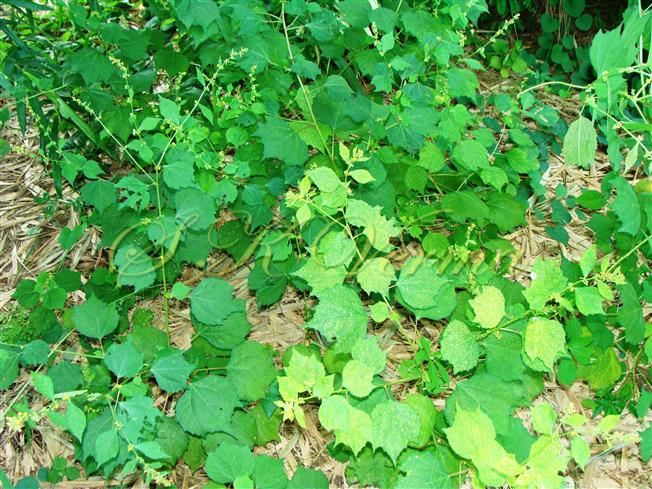
-9141.jpg)
 and Inflorescence-9806.jpg)
-DSC00385.jpg)
 and Stipule-DSC00387.jpg)
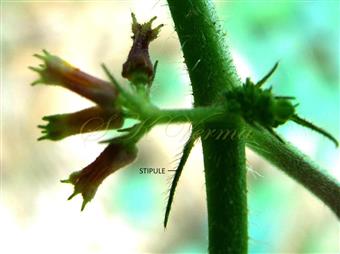
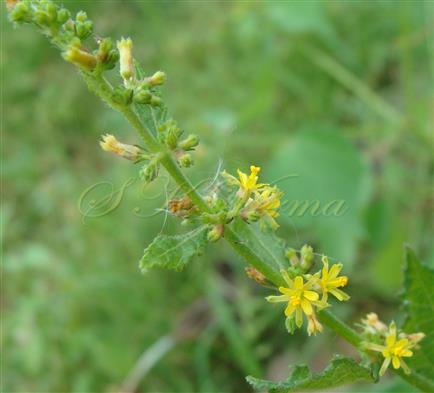
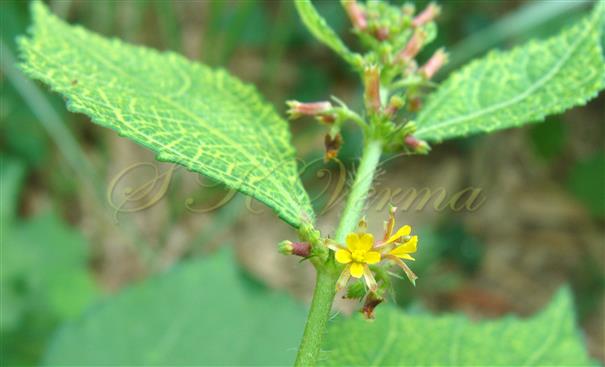
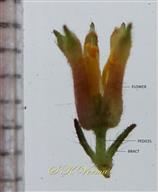
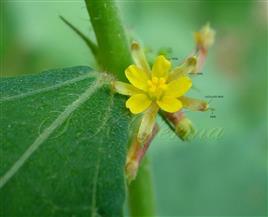
-9089 - Copy.jpg)

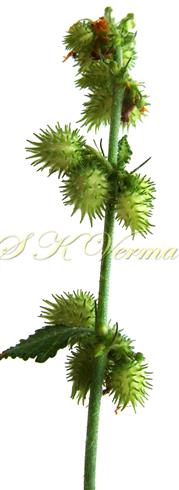
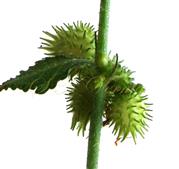


-9141.jpg)
 and Inflorescence-9806.jpg)
-DSC00385.jpg)
 and Stipule-DSC00387.jpg)





-9089 - Copy.jpg)
